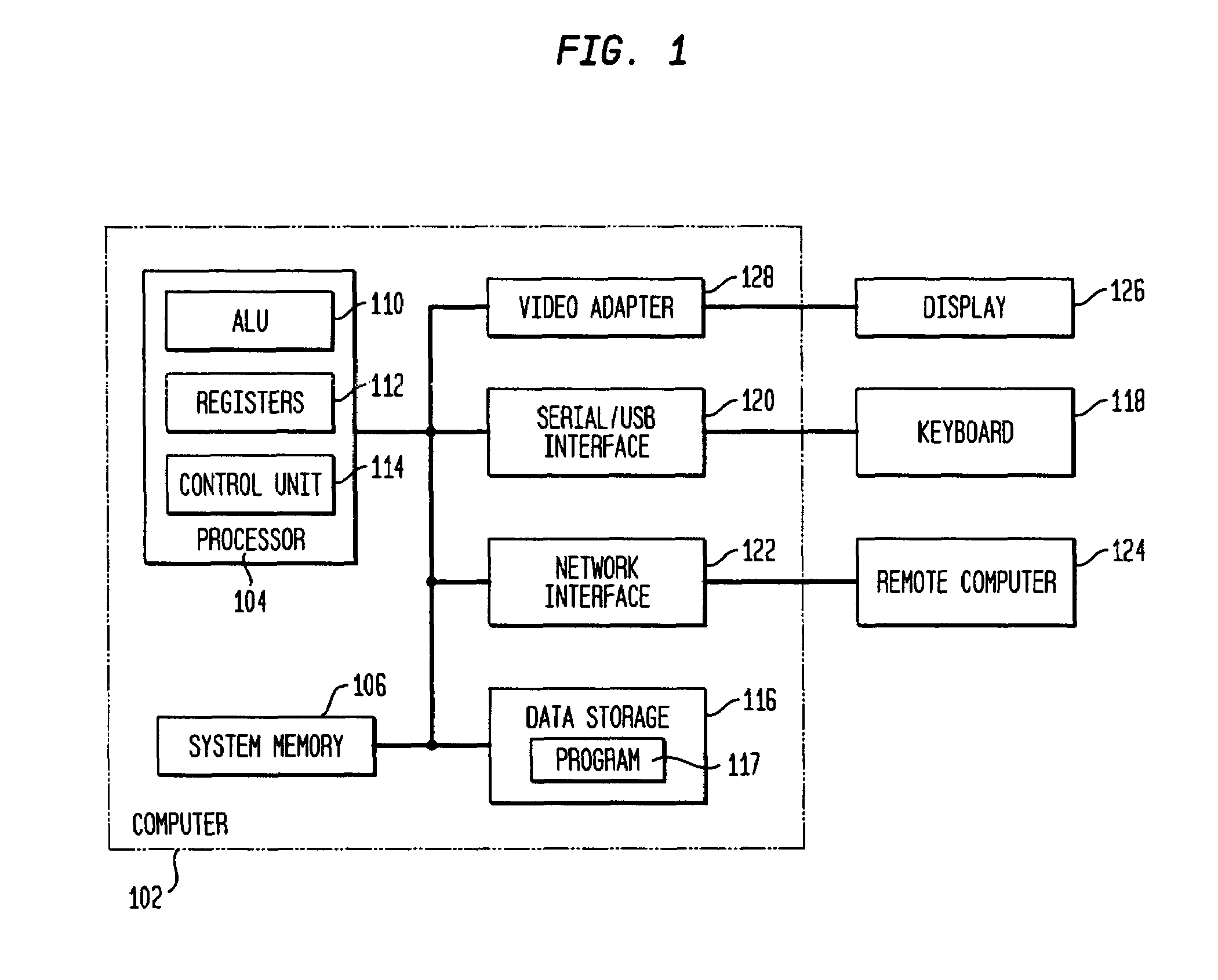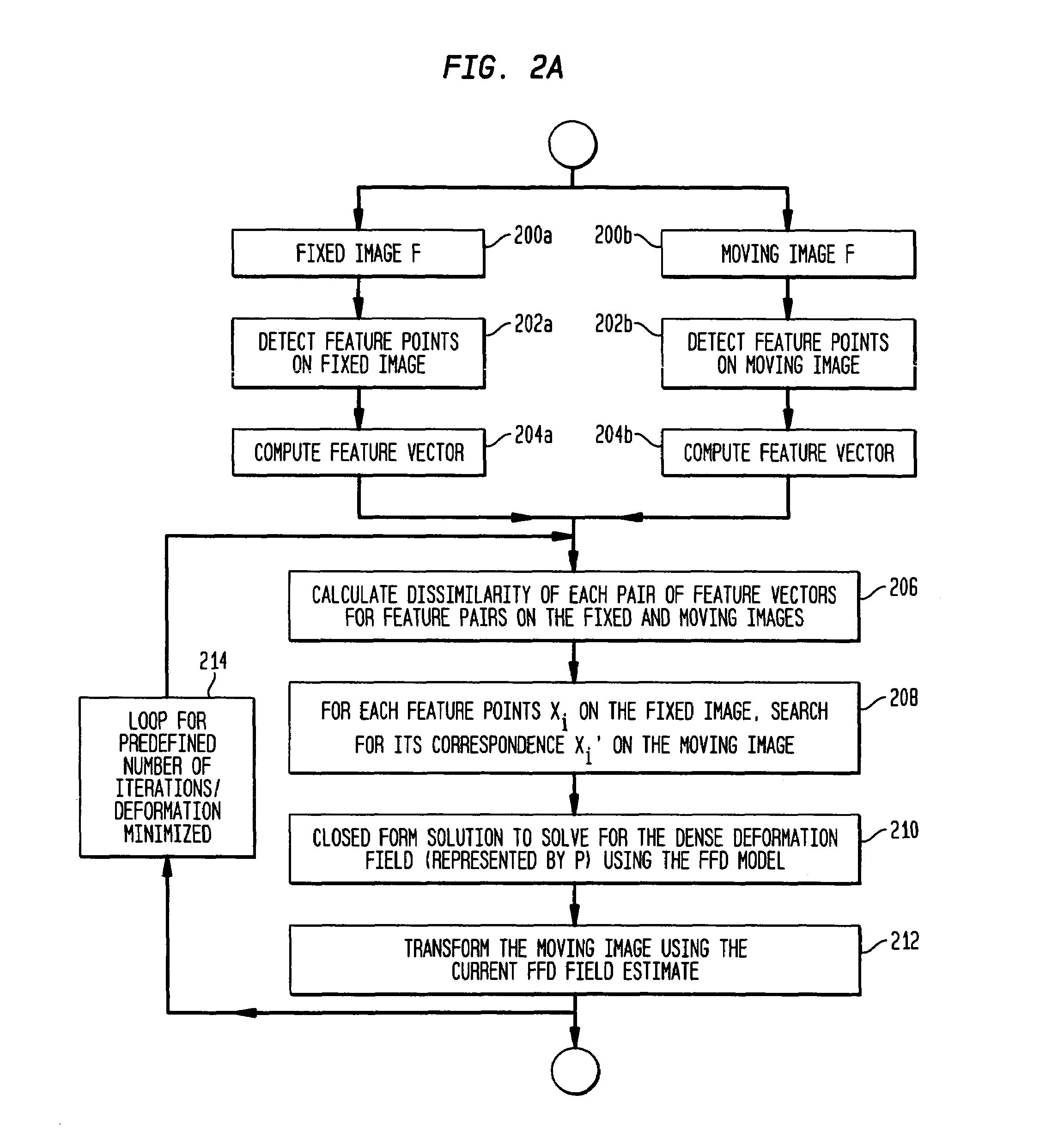Fast parametric non-rigid image registration based on feature correspondences
a feature correspondence and image registration technology, applied in the field of fast parametric non-rigid image registration based on feature correspondences and efficient deformation registration methodologies, can solve the problems of non-rigid registration, non-rigid registration remains, and the state-of-the-art non-rigid registration methods are relatively slow, and achieve good anatomical correspondences, easy to adapt to multi-modalities
- Summary
- Abstract
- Description
- Claims
- Application Information
AI Technical Summary
Benefits of technology
Problems solved by technology
Method used
Image
Examples
Embodiment Construction
[0021]FIG. 1 depicts an operating environment for an illustrated embodiment of the present invention, comprising a computer system 100 for implementing non-rigid image registration. The system 100 includes a conventional computer 102, comprising a processing unit 104, a system memory 106, and a system bus 108 that couples the various system components including the system memory to the processing unit 104. The processing unit is of conventional design and includes a typical arithmetic logic unit (ALU) 110 for performing computations, a collection of registers 112 for temporary storage of data and instructions, and a control unit 114 as is well known in the art. The system bus 108 may be any of several types of bus structures including a memory bus or memory controller, peripheral bus, and a local bus using any of a variety of bus architectures. The system memory 106 includes read only memory (ROM) and random access memory (RAM). The system memory 106 further includes a basic input / o...
PUM
 Login to View More
Login to View More Abstract
Description
Claims
Application Information
 Login to View More
Login to View More - R&D
- Intellectual Property
- Life Sciences
- Materials
- Tech Scout
- Unparalleled Data Quality
- Higher Quality Content
- 60% Fewer Hallucinations
Browse by: Latest US Patents, China's latest patents, Technical Efficacy Thesaurus, Application Domain, Technology Topic, Popular Technical Reports.
© 2025 PatSnap. All rights reserved.Legal|Privacy policy|Modern Slavery Act Transparency Statement|Sitemap|About US| Contact US: help@patsnap.com



